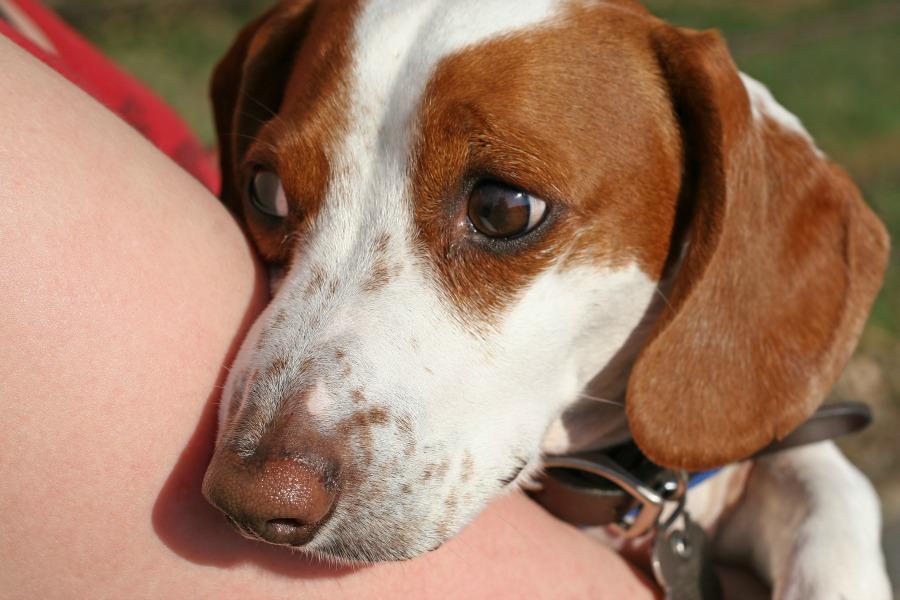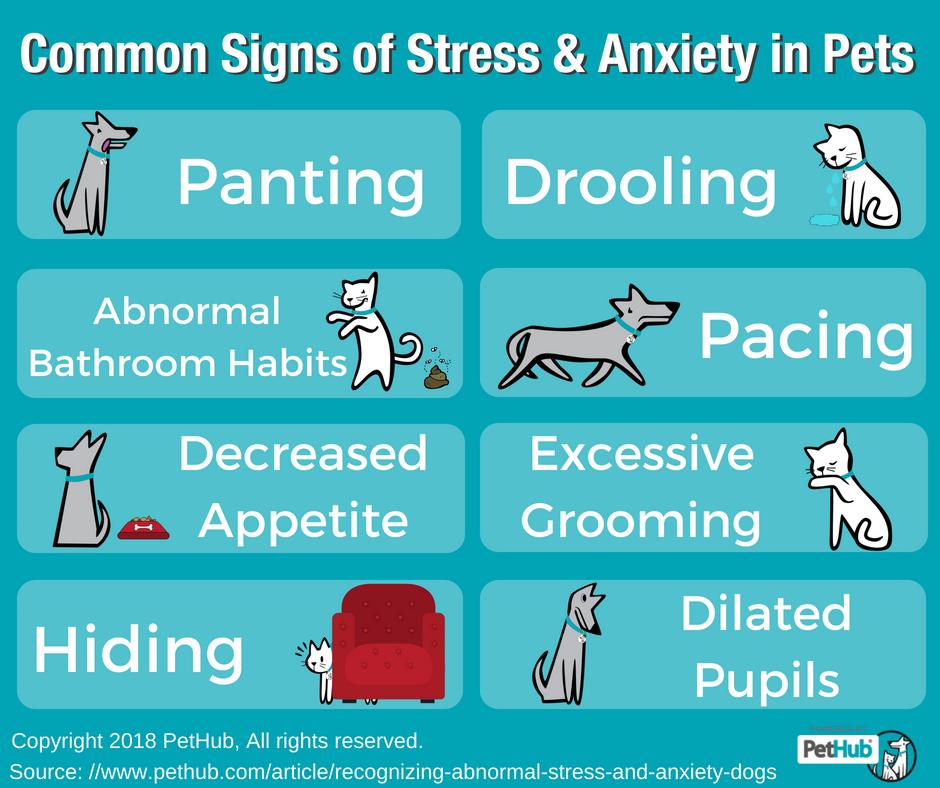You can learn a lot about a dog’s health and behavior by watching the ways they interact with their environment, and their handlers. As time goes on, you’ll notice your dog exhibits signs of stress. The best thing to do is to know how to intervene at the first sign of stress.
Stress is a normal reaction to everyday situations. In the wild, stress helps a dog survive. But in a human home, too much stress can be harmful for your dog’s health and make him more agitated or aggressive towards other people and pets. Learn how to identify stress symptoms in your dog so that you can reduce their occurrence.

As a dog owner, you want to know the signs of stress in your dog. You want to be able to recognize when your dog is stressed and take steps to help him relax. You can do this by learning what the most common signs of stress are in dogs.
Here are some common signs that your dog is stressed:
-Swollen Lymph Nodes
-Lack of Appetite
-Excessive Salivating or Drooling
-Dry Skin and Dandruff
-Lack of Energy
-Change in Behavior (Aggression)
There are a few signs of stress in dogs that you should be on the lookout for.
The first is excessive panting, which may be accompanied by drooling and restlessness.
Another sign is that your dog may become aggressive or lash out at other people or animals. This could include growling, barking, and even biting.
If you notice that your dog has become more withdrawn or afraid of things that would normally not bother them, this could also be a sign of stress.
Signs Of Stress In A Dog
Let’s face it, our dogs are often better people than we are. That’s why the prospect of our dog being scared, nervous or sad is often so heartbreaking to us as pet parents. Of course a little bit of stress or brief moment of fear is pretty much unavoidable and totally normal. But when anxiety becomes persistent, we have the power to help aid our pets in feeling better.
Being able to recognize when your dog is fearful and anxious, and identifying the cause, is the key to determining how to calm a nervous dog. Once you know those things, you can develop a strategy to address the issue. The less anxious they are, the less likely your dog is to run away from shock.

Common Behavior of Nervous and Anxious Dogs
Recognizing when your dog is nervous or scared is very important. If you pay keen attention, you’ll be able to see it in their body language or behavior. They’re likely doing one or several of these things:
- Spontaneously eliminating in the house (peeing or pooping)
- Exhibiting destructive behavior
- Tucking their Tail
- Their pupils are dilated
- Panting
- Pacing
- Whining or whimpering
- Avoiding eye contact
- Fidgeting
- Trying to hide or escape
- Trembling
- Excessively licking
- Avoiding interactions
- Showing displacement behaviors like yawning, lip licking, air sniffing, or “shaking it off” like a wet dog

While many of these behaviors can be considered “normal”, they can be reason for concern if they are taken to the extreme or start to occur routinely. If not addressed at the onset, a natural reaction to the unknown can turn into a phobia or general anxiety.
The Difference Between Fear, Phobia, and Anxiety in Dogs
Fears are typically short-term anxiety responses that dogs experience when they feel like they are in danger. Phobias are typically tied to a specific trigger. For example, many dogs experience noise aversion, or a fear of loud noises, that is triggered by things like fireworks and thunderstorms, but can also include construction noise, lawn mowers and blowers and traffic sounds. This is considered a phobia. If you have a pet with noise aversion we highly suggext checking out noise barriers like Pet Tunes.
Anxiety that is more general typically causes the dog to be “on edge” on a regular basis.
Veterinarians estimate that 50 percent of dogs and cats suffer from some form of fear, anxiety, or phobia, while noise aversion and separation anxiety conditions are prevalent among dogs. These are serious medical issues that require consultation with your veterinarian to identify ways to alleviate stress in your pet.
Know what the symptoms are so you can recognize them in your dog or cat. There are literally hundreds of all natural, veterinary recommended, drug free solutions on the market for pets with mild to moderate fear, anxiety and stress. Examples include supplements, pressure wraps, pheromones, music, biofeedback tools, behavior modification training and more. You’ll need to experiment to see which products work best for your pet and know that oftentimes, a layering of two or more solutions provides them maximum relief. These are serious medical issues that require formal consultation with your veterinarian to identify ways to alleviate stress in your pet. Don’t worry. We know what you may think when you hear the words Vet Visit.
The best way to ensure you save money in the process is by using pet insurance from a top-tier brand like Trupanion. With Trupanion your pet receives unlimited lifetime insurance coverage without caps and covers 90% of actual veterinary costs for eligible claims once you meet the deductible.Not to mention, Trupanion doesn’t make pet owners pay multiple times for a condition that is diagnosed once. So you won’t be constantly shelling out cash for an on-going diagnosis.
Always talk to your vet about your pet’s anxiety. He or she can recommend natural solutions, behavior modification, and in cases where a medication would best serve your pet, they can prescribe and monitor your pet’s progress.
Fear Anxiety – When Your Dog is Calm One Minute and Scared the Next
Fear anxiety is a normal response. Dogs naturally keep an eye out for potential threats. Fear anxiety, the instinctual feeling of fight or flight in the presence of a specific real or perceived threat.
A dog may exhibit a fear response around a certain person, object, or in a specific situation, especially in new situations or environments. A fear reaction can occur at any time, but it’s usually always triggered by the same specific thing or situation each time. In other words, your dog is relaxed unless the thing they are fearful of is around or happens.
Where fear becomes a problem is when the reaction is abnormal or inappropriate — when your dog’s reaction goes beyond “just a little nervous” to something more severe.
The good news is most abnormal fear reactions are learned and can be unlearned with training and gradual exposure. However, if not addressed in a proper and timely manner, these situations can lead to a long-term phobia or anxiety state.
Phobia – When Your Dog Always “Loses It” in Certain Situations or When It Sees a Certain Object
Persistent, excessive fear of a specific stimuli (trigger), left unaddressed, can lead to phobias. In other words, if you know your dog is terribly fearful of something but they keep getting scared by it, and they are exposed to that same thing over and over, their fear can develop into an extreme reaction.
The phobia can present itself when the dog is confronted by, or merely anticipates, the specific trigger. Some triggers can make sense, like loud noises or the car. However, some might not make any sense, like people wearing hats or glasses or inanimate objects like a lamp.
Dogs commonly develop phobias to loud noises like thunderstorms or fireworks, and even loud machines like vacuums or hair dryers. Your dog can also develop specific phobias to:
- Insects if dogs have received painful bites or stings from them
- Humans, often men or certain apparel, that they associate with a traumatic situation
- Blood draws or injections at the veterinarian if they are associated with painful moments in the dog’s memory
If your dog is exposed to the trigger they have a phobia to again and again without intervention from you in the form of reassurance, behavior modification, counter-conditioning, or desensitization, they may become constantly anxious.
When they feel like their world is unpredictable and the scary thing can show up at any time, they’re always anticipating a negative experience. In that case, their behavior may turn into generalized anxiety.
But before choosing to figure out a method of treatment yourself, be sure to go over your dog’s symptoms with a veterinary professional. Online vet-finder companies like Vetster make scheduling a vet visit a peice of cake. It takes only a few minutes to log into the webiste and schedule a tele-vet visit.
Generalized Anxiety – When Your Dog Always Seems on Edge with No Explanation
Is your dog is acting nervous and displaying all or some of the signs of anxiety listed above on a regular basis? If your dog is always on the lookout, and always seems on edge and unable to let their guard down, they might have a general anxiety disorder.
A dog with general anxiety is almost always walking around nervous like they are waiting for something to go wrong. There isn’t really a rhyme or reason to it. This constant anticipation of future unknowns is usually more consistent than fear anxiety or phobias — no extreme highs and lows, and on-going.
While generalized anxiety can develop from regular exposure to something your dog has a phobia of, it can also be caused by something as simple as the upsetting of routines or environment like a family member moving out, being left home alone for a long period of time, or moving to a new home.
Tricks to Help your Anxious Dog
According to PetMD, most fears, phobias, and anxieties develop in dogs at the onset of social maturity, from 12 to 36 months of age. It’s very important to address any anxiety that appears within this learning window by socializing your dog to people and other animals and exposing them to different environments, objects and walking surfaces.
However, sometimes that key period gets missed or that formative period is wrought with uncertainty, like with some rescue dogs that have been juggled from home to home at an early age. Also, fear anxiety, phobia and generalized anxiety can develop despite an owner’s best efforts.
If an older dog is experiencing high anxiety, don’t worry. It’s not necessarily too late to do something about it because an old dog can indeed learn new “tricks”.
If you notice your dog is more anxious or fearful of an object or situation than they should be, you might be able to minimize or reverse their reaction by:
- Conditioning your dog to have a neutral or positive association with their trigger (possibly with the assistance of a dog trainer or behaviorist)
- Providing your dogs with entertainment and distractions like the popular DogTV or with a personalized toy from Patchwork Pet.
- Controlling your dog’s environment by taking steps to avoid the object or situation
- Using a natural calming aid like aromatherapy and essential oils, the Calmz wearable calming device from Petmate, or one of these other natural calming products created for pets.
- Getting anti-anxiety medication from your veterinarian